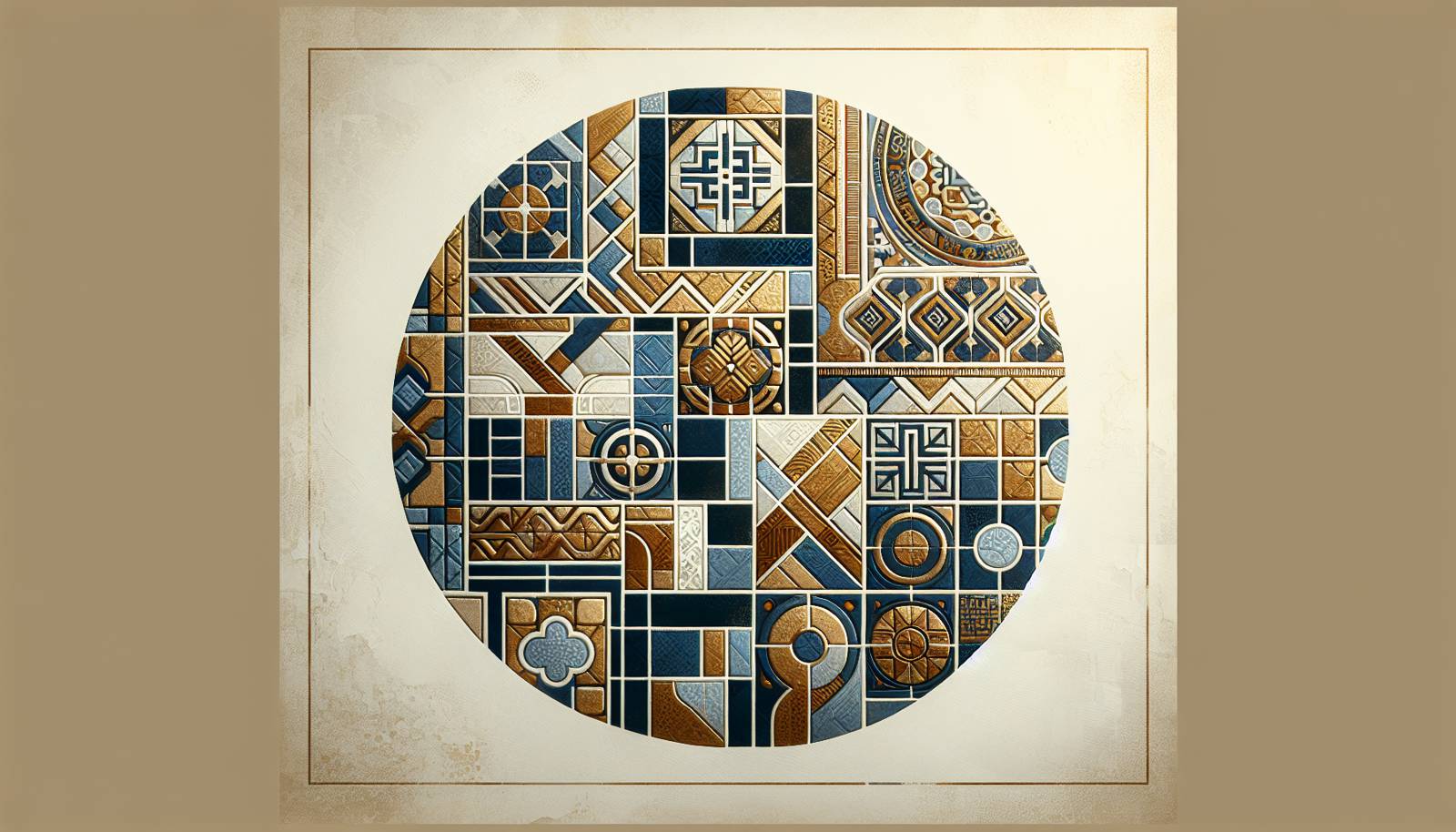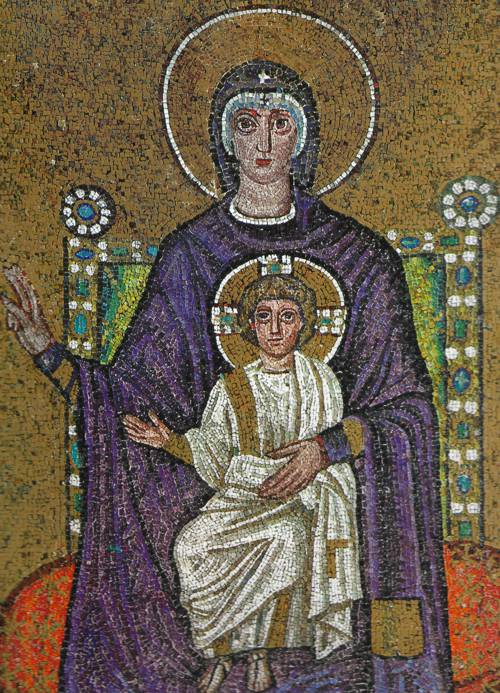
FAQ About The Influence of Byzantine Art on Modern Iconography

What defines Byzantine art style?
Byzantine art is characterized by its religious subject matter, use of gold and vibrant colors, and a unique style that emphasizes flat, two-dimensional figures. This art form often lacked perspective, focusing instead on conveying the spiritual essence rather than realistic portrayals. Icons, mosaics, and frescoes are typical artworks, known for their intricate detail and symbolism, meant to inspire religious contemplation.

How did Byzantine art influence modern iconography?
Byzantine art has greatly influenced modern iconography, especially within Eastern Orthodoxy and Catholicism. The use of symbolic imagery and the stylized depiction of religious figures continue to inform contemporary religious art. Modern iconography often draws on the color schemes, compositions, and theological symbolism characteristic of Byzantine aesthetics, ensuring continuity in spiritual representations.

What are some common themes in Byzantine art?
Common themes in Byzantine art include religious narratives, saints, and Christological events. These artworks predominantly depict scenes from the Bible, including the life of Christ, the Virgin Mary, and various saints. Byzantine artists aimed to convey theological concepts through visual means, often focusing on the holy and divine aspects of their subjects.

What materials were commonly used in Byzantine art?
Byzantine artists commonly used a variety of materials, including gold, tempered glass, ivory, and precious stones for mosaics. Frescoes were created using water-based pigments on wet plaster. The extensive use of gold leaf, especially in backgrounds, not only enhanced the visual effect but also conveyed the divine presence and heavenly glory.

What is the historical significance of iconoclasm in Byzantine art?
Iconoclasm refers to the rejection and destruction of religious images, which was a significant controversy in the Byzantine Empire during the 8th and 9th centuries. The Iconoclasts opposed the veneration of icons, leading to significant political and theological turmoil. This period shaped much of the discourse about religious images, influencing the future aesthetic direction and the theological justification for the use of icons within the church.

How is Byzantine art different from Renaissance art?
Byzantine art and Renaissance art differ mainly in their subject matter, style, and purpose. While Byzantine art focuses on religious themes with stylized, flat depictions, Renaissance art emphasizes realism, individualism, and the use of perspective. Renaissance artists sought to represent the natural world and human experience, incorporating scientific understanding and exploring secular themes alongside religious ones.

What role did icons play in Byzantine society?
In Byzantine society, icons served as important religious tools for worship and contemplation. They were believed to be windows to the divine, facilitating a spiritual connection between the faithful and the holy figures depicted. Icons were integral in the liturgical practices and held a significant place in private devotion, reinforcing both communal and personal spirituality.

Why is symbolism important in Byzantine art?
Symbolism in Byzantine art is crucial as it conveys theological messages and spiritual truths beyond the literal depiction. Each element, from colors to gestures, holds specific meanings, intended to educate and inspire the viewer spiritually. This symbolic language helped reinforce church doctrine and encouraged a deeper understanding and contemplation of the divine.

What is the difference between Eastern Orthodox and Western Christianity’s use of iconography?
The use of iconography in Eastern Orthodox Christianity is more pervasive and deeply integrated into worship practices compared to Western Christianity. Eastern Orthodox iconography emphasizes a more standardized and formalized approach, focusing on the divine nature and spiritual aspects, whereas Western traditions have historically leaned toward realistic, narrative depictions reflecting human emotions and experiences.

How did Byzantine mosaics influence modern architecture?
Byzantine mosaics have influenced modern architecture through their intricate designs and use of durable, colorful materials. These mosaics have inspired modern techniques in both decorative and functional aspects, often seen in public and religious buildings. Contemporary mosaic works sometimes draw directly from Byzantine color schemes and symbolic imagery to create a fusion of historical and modern aesthetics.

What impact did Byzantine art have on Western medieval art?
Byzantine art had a profound impact on Western medieval art, especially influencing the Romanesque and Gothic styles. Its religious themes, use of iconography, and emphasis on spirituality helped shape the visual languages of churches and liturgical art in Western Europe. The Byzantine style's focus on clarity, symbolism, and religious narrative carried over to medieval manuscript illuminations and altarpieces.

Are Byzantine icons used in modern worship?
Yes, Byzantine icons continue to play a vital role in modern Eastern Orthodox worship. They are used in churches and homes as focal points in prayer and liturgical services, where they serve as more than mere decorations but as sacred tools facilitating spiritual connections. The veneration of icons remains a central practice, celebrating the continuity of tradition and faith.

Where can one find authentic Byzantine art today?
Authentic Byzantine art can be found in various museums, churches, and monasteries around the world, including those in Greece, Italy, and Turkey. Notable collections are housed at the Byzantine and Christian Museum in Athens, Hagia Sophia in Istanbul, and the Monastery of Saint Catherine on Mount Sinai. These sites preserve a rich heritage of mosaics, frescoes, and icons.

How does modern secular iconography borrow from Byzantine art?
Modern secular iconography often borrows from Byzantine art by adopting its stylistic elements like the use of bold colors, symbolic representation, and abstract compositions. In graphic design, film, and visual media, these elements are sometimes used to evoke a sense of tradition, authority, or timelessness, showing how Byzantine aesthetics have permeated broader visual culture.

What techniques did Byzantine artists use?
Byzantine artists used techniques like encaustic painting, where pigments are mixed with hot wax and applied to a surface, and mosaic art, which involved assembling small pieces of colored glass or stone. The fresco technique was also prevalent, with pigments applied to wet plaster walls, allowing the colors to absorb and become permanent fixtures of architectural interiors.

What role does color play in Byzantine icons?
Color in Byzantine icons is highly symbolic and integral to the communication of spiritual truths. For example, gold represents divine light, red is linked with martyrdom and the Holy Spirit, and blue symbolizes the human aspect of Christ. These colors are not merely aesthetic choices but are rooted in conveying specific theological messages and guiding the viewer's contemplation.

How did Byzantine iconography spread across cultures?
Byzantine iconography spread across cultures through trade, conquest, and the church's influence. The Eastern Roman Empire's strategic position facilitated cultural exchanges with Slavic countries, Russia, and the Middle Eastern regions. Missionaries and artists carried these artistic traditions, integrating them into local customs and creating hybrid styles that reflected both indigenous and Byzantine influences.

How do modern artists reinterpret Byzantine art today?
Many contemporary artists reinterpret Byzantine art by incorporating its visual language into modern contexts. This includes experimenting with traditional techniques like mosaics and icon painting and integrating them into conceptual art. By blending old and new styles, artists often comment on spiritual and societal themes, exploring the timeless relevance of Byzantine art in today's world.

Why do icons in Byzantine art appear static and emotionless?
The static and emotionless appearance of figures in Byzantine icons is intentional, emphasizing transcendence over human emotion. This style serves to direct focus on the divine and eternal rather than the temporal human condition. By creating a calm, otherworldly atmosphere, these icons encourage viewers to engage in spiritual reflection, experiencing the sacred beyond physical expressions.

What is the role of monastic communities in preserving Byzantine art?
Monastic communities play a crucial role in preserving Byzantine art by safeguarding traditional techniques and theological interpretations. Monasteries have been centers for the creation and conservation of icons, manuscripts, and mosaics. They serve as educational hubs, ensuring that knowledge of these ancient practices continues to thrive, providing continuity and contributing to cultural heritage preservation efforts.
